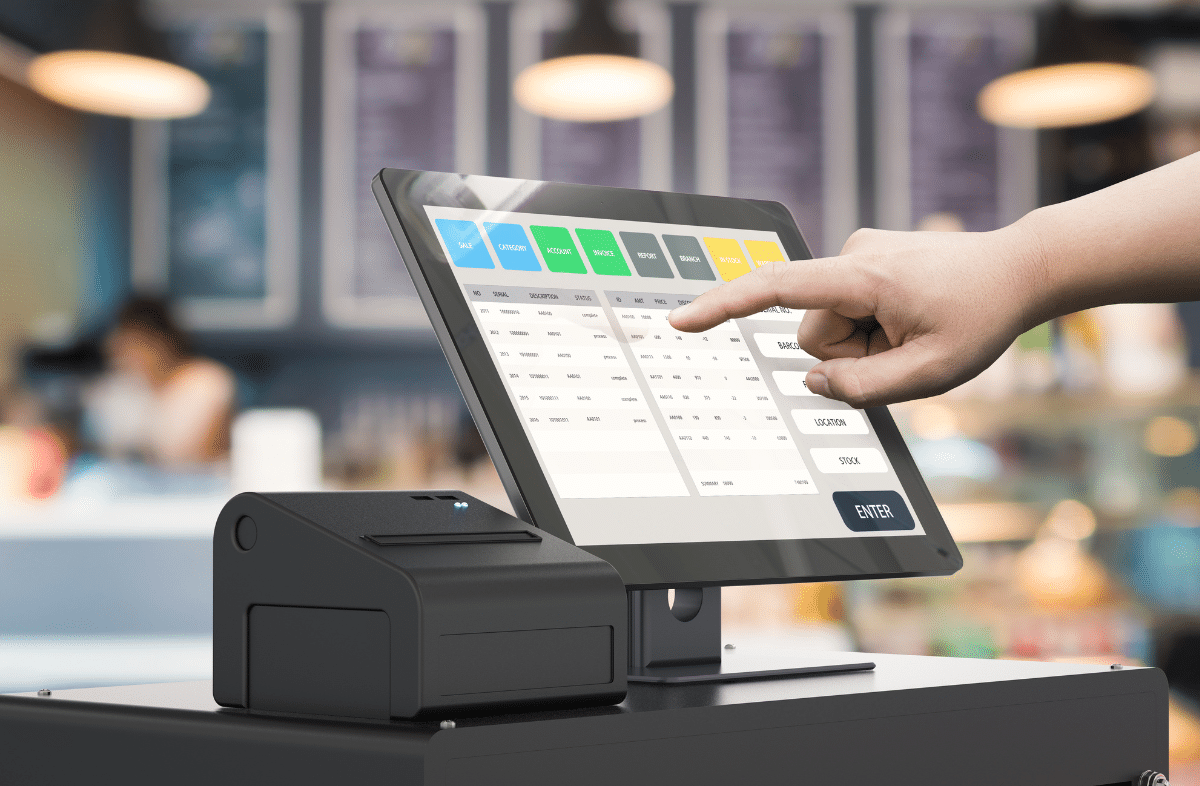In the realm of commerce, effective product identification is crucial. Whether you’re a manufacturer, retailer, or consumer, accurate and efficient product identification streamlines processes, enhances transparency, and ensures consumer trust. One of the most powerful tools in this domain is the Global Trade Item Number (GTIN) system. This comprehensive guide delves deep into the world of GTIN lookup, offering insights into its significance, functionality, applications, and how it can revolutionize your product identification process.
Understanding GTIN: The Backbone of Product Identification
GTIN stands for Global Trade Item Number. It is a unique identifier assigned to products to facilitate their identification and tracking throughout the global supply chain. GTINs are crucial for inventory management, sales tracking, and product authentication. They serve as a standardized method for uniquely identifying trade items, enabling seamless communication and data exchange among various stakeholders, including manufacturers, retailers, and consumers.
The GTIN system was developed by GS1, a global non-profit organization that sets standards for various aspects of supply chain management and commerce. GTINs are assigned to products at the time of manufacturing or packaging and are typically encoded into barcodes for easy scanning and processing.
GTINs play a pivotal role in various aspects of commerce, including supply chain management, retail operations, and consumer confidence. They enable businesses to track products from manufacturing to retail shelves, facilitate accurate inventory management, and empower consumers to make informed purchasing decisions. In essence, GTINs serve as the backbone of product identification in the modern global marketplace.
Types of GTINs
There are several types of GTINs, each serving a specific purpose:
- GTIN-12: Used primarily in North America, GTIN-12 is a 12-digit barcode, commonly known as UPC (Universal Product Code).
- GTIN-13: Also known as EAN-13 (European Article Number), this 13-digit barcode is widely used internationally for retail products.
- GTIN-14: Also called ITF-14 (Interleaved 2 of 5), GTIN-14 is used for cartons and pallets, providing a way to identify multiple units of a product.
- GTIN-8 and GTIN-12: These are shorter versions of GTINs used for smaller packaging or where space is limited.
The Importance of GTIN
The importance of GTIN (Global Trade Item Number) in the realm of commerce cannot be overstated. GTINs serve as a standardized method for uniquely identifying trade items, enabling seamless communication and data exchange among various stakeholders, including manufacturers, retailers, and consumers. Here are some key aspects highlighting the significance of GTINs:
1. Supply Chain Management:
GTINs play a crucial role in supply chain management by facilitating the tracking and tracing of products from manufacturer to end consumer. They serve as unique identifiers that enable businesses to monitor the movement of goods, optimize inventory levels, and streamline logistics operations. By associating GTINs with product information, such as batch numbers and expiry dates, companies can ensure product safety and compliance with regulatory requirements.
2. Retail Operations:
In the retail sector, GTINs are essential for efficient inventory management, accurate pricing, and seamless checkout processes. Retailers use GTINs to maintain product catalogs, track stock levels, and reconcile sales transactions. By scanning GTIN-encoded barcodes at checkout, retailers can automate the process of identifying and pricing products, reducing errors and enhancing customer satisfaction.
3. Product Authentication:
GTINs serve as a means of verifying the authenticity of products, especially in industries prone to counterfeiting or parallel importation. By cross-referencing GTINs with manufacturer databases or third-party authentication services, consumers can validate the legitimacy of products and make informed purchasing decisions. This enhances consumer trust and confidence in the products they buy, ultimately safeguarding brand reputation and revenue streams for manufacturers.
4. Regulatory Compliance:
Many industries are subject to regulatory requirements mandating the use of GTINs for product identification and tracking. Compliance with these standards, such as those set forth by GS1, ensures consistency and interoperability across supply chains. GTINs enable businesses to meet regulatory obligations related to product labeling, serialization, and recall management, thereby mitigating risks associated with non-compliance and regulatory penalties.
5. Consumer Confidence:
GTINs contribute to consumer confidence by providing transparency and traceability throughout the product lifecycle. Consumers can use GTINs to access detailed product information, including ingredients, nutritional values, and manufacturing origins. This empowers consumers to make informed choices aligned with their preferences, dietary restrictions, or ethical considerations. Moreover, GTINs enable consumers to track the provenance of products, fostering trust in brands that prioritize transparency and accountability.
6. Global Compatibility:
One of the key advantages of GTINs is their global compatibility and interoperability. GTINs follow international standards established by organizations like GS1, ensuring consistency and uniformity across different regions and markets. This allows businesses to seamlessly exchange product information with trading partners worldwide, irrespective of language or regulatory differences. As a result, GTINs facilitate cross-border trade, market expansion, and harmonization of business processes on a global scale.
Benefits of GTIN Lookup
Adopting GTIN lookup offers numerous advantages for businesses and consumers alike, revolutionizing product identification processes and enhancing overall efficiency and transparency. Let’s delve into the key benefits:
- Enhanced Efficiency and Accuracy: GTIN lookup automates product identification processes, reducing the reliance on manual data entry and minimizing errors associated with human input. By querying centralized databases, businesses can retrieve accurate and up-to-date product information swiftly, improving operational efficiency and data accuracy.
- Streamlined Operations: GTIN lookup streamlines various business operations, including inventory management, order processing, and supply chain logistics. With real-time access to comprehensive product information, businesses can make informed decisions, optimize inventory levels, and streamline order fulfillment processes, resulting in cost savings and improved customer satisfaction.
- Improved Product Visibility: GTIN lookup enhances product visibility across the supply chain, enabling stakeholders to track the movement of products from manufacturing facilities to distribution centers and retail outlets. By leveraging GTINs and associated product data, businesses can gain greater visibility into inventory levels, shipment status, and product availability, enabling proactive management and timely replenishment.
- Enhanced Consumer Confidence: GTIN lookup empowers consumers to make informed purchasing decisions by providing access to accurate and detailed product information. With the ability to verify product authenticity, trace product origins, and access relevant product attributes such as ingredients, specifications, and allergens, consumers can shop with confidence, fostering trust and loyalty towards brands and retailers.
- Facilitated Regulatory Compliance: GTIN lookup facilitates compliance with regulatory requirements and industry standards, such as GS1 standards for product identification and labeling. By ensuring the accuracy and consistency of product information, businesses can mitigate the risk of non-compliance, regulatory fines, and reputational damage, while also supporting efforts to enhance consumer safety and transparency.
- Seamless Integration with Systems and Processes: GTIN lookup systems can be seamlessly integrated with existing enterprise systems, including ERP (Enterprise Resource Planning), POS (Point of Sale), and e-commerce platforms. This integration enables businesses to leverage GTIN data across multiple touchpoints, ensuring consistency and synchronization of product information throughout the organization.
- Global Compatibility and Interoperability: GTINs follow international standards set by organizations like GS1, making them universally recognized and interoperable across different regions and markets. This global compatibility enables seamless communication and data exchange among supply chain partners, regardless of geographical location or industry sector, fostering collaboration and efficiency in global trade.
- Cost Savings and Resource Optimization: By automating product identification processes and centralizing product data, GTIN lookup helps businesses optimize resources, reduce operational costs, and minimize the risk of inventory discrepancies and stockouts. With improved inventory visibility and demand forecasting capabilities, businesses can better allocate resources, minimize excess inventory, and maximize profitability.
Implementing GTIN Lookup Systems
Implementing GTIN lookup systems involves several key considerations and steps to ensure their successful integration into existing workflows. Here’s a more detailed exploration:
1. Data Infrastructure:
Establishing a robust data infrastructure is fundamental to the effective implementation of GTIN lookup systems. This infrastructure should be capable of storing vast amounts of product information securely and efficiently. Key components of the data infrastructure include:
- Database Management: Choose appropriate database management systems capable of handling structured and unstructured data efficiently.
- Data Integration: Integrate GTIN lookup systems with existing data sources, such as ERP (Enterprise Resource Planning) systems, product databases, and external data feeds.
- Data Quality Management: Implement data quality measures to ensure the accuracy, completeness, and consistency of product information stored in the database.
2. Integration with Existing Systems:
Seamless integration with existing systems is essential to maximize the utility of GTIN lookup systems and minimize disruption to business processes. Consider the following integration aspects:
- ERP Integration: Integrate GTIN lookup functionality with ERP systems to ensure smooth data exchange between inventory management, sales, and procurement modules.
- Point of Sale (POS) Integration: Incorporate GTIN lookup capabilities into POS systems to enable real-time product identification and pricing at checkout.
- E-commerce Platform Integration: Integrate GTIN lookup with e-commerce platforms to populate product catalogs, provide accurate product descriptions, and streamline online transactions.
- APIs and Web Services: Develop APIs (Application Programming Interfaces) and web services to facilitate seamless communication between GTIN lookup systems and external applications or third-party services.
3. User Interface Design:
User-friendly interfaces are critical for ensuring ease of use and accessibility of GTIN lookup systems for different stakeholders, including employees, customers, and partners. Considerations for UI design include:
- Intuitive Navigation: Design interfaces that are easy to navigate, with intuitive search functionalities for querying GTINs and retrieving product information.
- Responsive Design: Ensure compatibility with various devices and screen sizes, including desktops, laptops, tablets, and smartphones.
- Customization Options: Provide users with customization options, such as filters and preferences, to tailor the GTIN lookup experience to their specific needs and preferences.
4. Data Security:
Data security is paramount when implementing GTIN lookup systems, especially considering the sensitive nature of product information and the potential impact of data breaches. Key security measures to consider include:
- Access Control: Implement role-based access control mechanisms to restrict access to sensitive product information based on user roles and permissions.
- Encryption: Use encryption techniques to secure data transmission and storage, protecting against unauthorized access and interception.
- Audit Trails: Maintain comprehensive audit trails to track user activities and changes to product information, enabling accountability and traceability.
- Compliance with Regulations: Ensure compliance with data protection regulations, industry standards, and best practices to mitigate the risk of data breaches and regulatory penalties.
By addressing these considerations and implementing GTIN lookup systems effectively, businesses can harness the power of standardized product identification to streamline operations, enhance efficiency, and drive value across the supply chain.
Future Trends and Innovations
The future of GTIN lookup holds promising developments and innovations:
- Blockchain Integration: Integrating blockchain technology can enhance the security, transparency, and traceability of GTIN lookup systems, enabling immutable product tracking and authentication.
- AI and Machine Learning: Leveraging AI and machine learning algorithms can improve the accuracy and efficiency of GTIN lookup processes, enabling predictive analytics and personalized product recommendations.
- IoT Integration: Integrating GTIN lookup with Internet of Things (IoT) devices can enable real-time tracking and monitoring of products throughout the supply chain, enhancing visibility and control.
- Standardization and Collaboration: Continued efforts towards standardization and collaboration among stakeholders, including manufacturers, retailers, and regulatory bodies, are essential for advancing the capabilities and interoperability of GTIN lookup systems.
Conclusion
GTIN lookup represents a cornerstone in modern product identification and tracking systems. By harnessing the power of GTINs and implementing robust lookup systems, businesses can streamline operations, enhance transparency, and foster consumer trust. As technology continues to evolve and new innovations emerge, the potential for GTIN lookup to revolutionize product identification processes remains vast. Embracing this transformative technology is not just a strategic choice but a necessity for staying competitive in today’s dynamic marketplace.
In conclusion, GTIN lookup isn’t just a tool; it’s a catalyst for innovation and efficiency in the world of commerce. Embrace it, leverage its capabilities, and unlock new possibilities for your business. Book a demo now.












